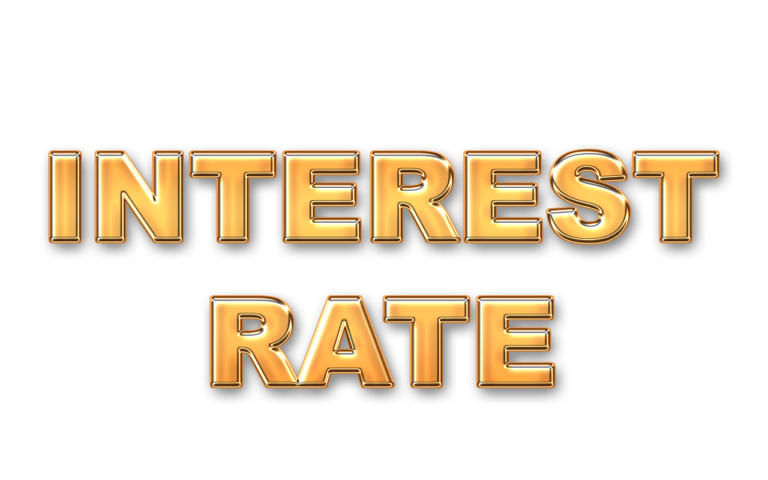credit:https://pixabay.com/
Savings interest rates play a crucial role in personal finance, offering individuals a means to grow their money while maintaining liquidity. This guide dives into the nuances of savings interest rates, exploring factors that influence them, different account types, the role of compound interest, global trends, and strategies to maximize returns.
What Are Savings Interest Rates?
Savings interest rates represent the annual percentage yield (APY) that banks or financial institutions pay depositors for holding money in a savings account. The rate determines how much your savings will grow over time. For example, if you deposit $10,000 in an account with an interest rate of 2% per annum, you’ll earn $200 after one year.
Savings interest rates are typically lower than investment returns due to their low-risk nature. However, they offer unparalleled safety and liquidity, making them a preferred choice for emergency funds or short-term goals.
Factors Influencing Savings Interest Rates
Several factors determine the interest rates on savings accounts:
- Central Bank Policies
Central banks, such as the Federal Reserve in the U.S., influence interest rates by adjusting the federal funds rate. Higher rates encourage banks to offer better savings rates to attract deposits. - Inflation Rates
Inflation impacts the real value of money. To remain competitive, banks often adjust interest rates to provide returns that outpace inflation, though not always significantly. - Bank Competition
In competitive markets, banks may offer higher rates to attract new customers, especially for high-yield accounts. - Economic Conditions
During economic slowdowns, interest rates often decrease to encourage borrowing and spending, reducing savings yields. - Deposit Size and Account Type
Larger deposits or specialized accounts (e.g., money market accounts) often yield higher rates due to their size or added restrictions.
Types of Savings Accounts and Their Interest Rates
Different savings accounts cater to varying financial needs, each offering distinct interest rates:
- Traditional Savings Accounts
These accounts offer basic savings features with relatively low interest rates, typically ranging from 0.01% to 0.50%. - High-Yield Savings Accounts
Offered by online banks or credit unions, these accounts provide higher interest rates (up to 5% in some cases) in exchange for fewer branch services. - Fixed Deposits (Certificates of Deposit)
These accounts lock funds for a specific period, offering higher rates as a reward for reduced liquidity. Rates can range from 2% to 6%, depending on the term. - Money Market Accounts
Combining features of savings and checking accounts, these accounts offer higher rates for larger deposits, often ranging from 0.5% to 2%. - Specialized Savings Accounts
Some accounts cater to specific goals, like retirement or education, offering tax advantages alongside competitive rates.
Impact of Compound Interest on Savings Growth
Compound interest is a powerful tool for growing savings. Unlike simple interest, where returns are calculated only on the principal, compound interest applies to both the principal and previously earned interest.
- Example of Compound Growth:
Imagine depositing $5,000 in a high-yield account with a 3% annual interest rate compounded monthly. Over 10 years, your balance would grow to $6,720.85, thanks to compounding.
The frequency of compounding—daily, monthly, or annually—significantly affects growth. Accounts with more frequent compounding periods yield higher returns over time.
Global Comparison of Savings Interest Rates
Savings interest rates vary widely across countries due to differing economic conditions, central bank policies, and market dynamics.
- United States
Average rates hover around 0.01% to 0.50% for traditional accounts, with high-yield accounts offering up to 5%. - European Union
European banks often provide lower rates, reflecting the European Central Bank’s historically low interest rate policies. - Emerging Markets
Countries like India and Brazil offer higher savings rates, sometimes exceeding 6%, to attract deposits in growing economies. - Japan and Switzerland
Both countries are known for their near-zero or negative interest rates, discouraging savings to stimulate spending.
This variation highlights the importance of understanding local financial contexts when choosing savings options, especially for expatriates or frequent travelers.
Strategies to Maximize Returns from Savings Accounts
Maximizing returns on your savings requires a strategic approach:
- Opt for High-Yield Accounts
Online banks or credit unions often provide higher rates due to lower overhead costs. - Leverage Promotional Offers
Many banks offer introductory rates for new accounts, providing a short-term boost to your earnings. - Use Fixed Deposits Strategically
If you don’t need immediate liquidity, locking funds in fixed deposits can yield higher returns. Laddering multiple fixed deposits with varying maturities ensures periodic access to funds. - Monitor Rate Changes
Stay informed about interest rate trends and switch accounts if better rates become available. - Consider Inflation-Protected Savings
Accounts or bonds indexed to inflation safeguard your purchasing power over time. - Utilize Compound Interest
Choose accounts with frequent compounding to maximize growth, especially for long-term savings.
Conclusion
Savings interest rates, though not as high as investment returns, offer a secure avenue for growing your money. By understanding the factors influencing these rates, choosing the right type of savings account, leveraging the power of compound interest, and adopting strategic practices, you can maximize your savings potential.
The global landscape of savings rates underscores the need for informed decision-making tailored to your financial goals and regional economic conditions. With diligent planning, even modest savings can grow significantly over time.
References
- Investopedia. How Interest Rates Work on Savings Accounts.
- Federal Reserve. Understanding Interest Rates.
- World Bank. Global Interest Rate Trends.
- NerdWallet. Best High-Yield Savings Accounts.
- European Central Bank. Savings and Interest Rates in Europe.


